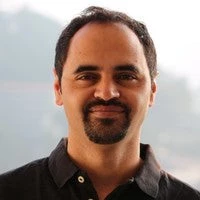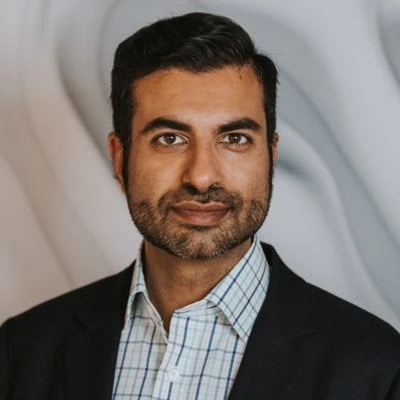 Social Development
Social Development
With the adoption of the 2030 Agenda for Sustainable Development, 193 nations around the world pledged to “endeavor to reach the furthest behind first” so that “no one will be left behind”. Governments often face barriers reaching the most vulnerable populations. Remoteness, low-literacy rates, lack of electricity and connectivity, and traditional gender norms and biases can limit the hardest to reach communities from accessing information and opportunities.
Nonetheless, mobile phones, the internet, and new innovative digital technologies have created unprecedented opportunities to leapfrog current constraints. Effective use of disruptive technologies is a major priority for the World Bank and reaching those furthest behind has been a core mandate of the World Bank’s Social Development Global Practice. In our work, we help the poorest and most marginalized to overcome their deprivations and barriers.
Thus, we have been working on initiatives utilizing technology to empower citizens to create better futures for themselves and their communities. Here are some early findings:
1. Even low-tech can be disruptive and deliver results
Technology doesn’t have to be as sophisticated as blockchain or neural networks to have an impact. Amplio Network, a nonprofit whose mission is to share knowledge with the world’s hardest to reach communities, created an easy-to-use Talking Book audio device designed for people who can’t read and who live in places where there’s no electricity or network. It’s built to withstand the elements and works with the locally available batteries that people use for radios or flashlights. Their cloud-based technology platform includes an audio content manager, an app that downloads new content playlists and collects user feedback and usage data from Talking Books in the field, and an analytics dashboard for monitoring and evaluating data for each community. These devices are brought to communities by mobilizers who visit periodically. They can hold hundreds of hours of audio and have an interface designed to work well across cultures, regardless of literacy or disability.
It is currently used throughout Africa, particularly in Ghana and Kenya, to disseminate health and livelihood information and to collect feedback from remote communities using audio-based messages. This technology can extend the life of a consultation well beyond the in-person phase, and the data collected can be subsequently uploaded to the cloud to provide a rich source of data analytics about citizen engagement and local needs. The Bank has initiated pilots using this tool in Cameroon and is planning similar pilots in Nigeria, Kenya and Uganda.
2. The potential of new data sources and analytics is significant
Often excluded from traditional forms of data collection due to various biases, much of the population remain outside the global digital ecosystem. Thankfully this is about to change. The proliferation of big data in the form of satellite images and cell phone data are increasingly shedding light on various socio-economic parameters , even in the most remote corners of the globe. For example, we are working with Orbital Insight to improve various aspects of resettlement planning.
Along with the rapid advances in Artificial Intelligence (AI) analytics, lack of data will not be a justifiable excuse for exclusion. Given these new advances, we are now able to better analyze qualitative information - gathered from consultations and grievance redress mechanisms, among other activities - in a more comprehensive manner. AI algorithms that commercial firms use to respond to consumer complaints and feedback or conduct targeted advertising based on qualitative information based on social media posts, can also be used for social good and citizen engagement. This could yield important insights on what matters most to the poor, best practices that reflect citizen needs and how to best target development interventions based on local circumstances.
Also, given the increased use of online search and social media where there is connectivity, there is a rich and underexploited environment of information from citizens. Not only can we use these platforms to digitally engage citizens, but we can mine the content of these networks using AI-driven search and social media analytics to take a pulse of sentiments, identify development preferences, and ensure that technology amplifies the voices of the poor.
3. Where there is opportunity, there is also risk
While providing many benefits, technology, if not carefully deployed, can also exacerbate the digital divide and negatively affect social cohesion. The World Bank’s Social Development Team is starting to address this by learning from experts in this space and educating ourselves on how to be smart consumers and users of AI/ Machine Learning (ML) and other technology tools. For example, forums such as the Ethics, Policy, and Governance in AI and Digital Civil Society conferences at Stanford have highlighted that algorithms that build on the past often internalize bias and discrimination. Similarly, as broadband penetration widens, the expansion of social media networks can disrupt longstanding social structures and can also be exploited to target and marginalize vulnerable groups and minorities. As the World Bank advances global digital development and GovTech solutions, it will be critical for us to dramatically up our game on digital social risk management to protect the poorest and most vulnerable.
Overall, we are excited about the opportunity to transform development and reach those furthest behind with technology. In addition to our current pilots and potential future pilots in 2020, we are also exploring partnerships with technology companies, innovators, universities, and foundations to pilot and scale up promising technologies to enhance impact of social and economic services in vulnerable communities and lagging areas. As we continue to embrace and leverage disruptive technology to improve the lives of those in the most vulnerable communities, we are also bringing a critical eye – asking tough questions, assessing risk, and encouraging inclusive development.






Join the Conversation